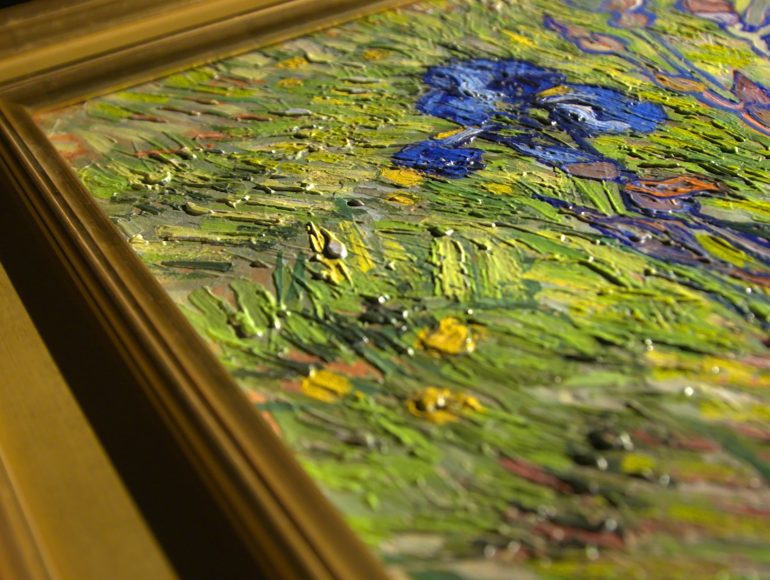Until recently, if you wanted a Vincent van Gogh or Monet painting in your home, you had two options: pay millions, or shell out a far more economical sum to get a 2D reproduction. Of course, if you went for the latter option, you were getting a pale imitation. The cavernous ridges and thick canyons of oil pigments all get flattened, turning it all into mere ink on paper. How do you capture the brushwork and texture of the paint from the original?
Verus Art, in collaboration with the National Gallery of Canada, has found a technological solution: merging the latest scanning and 3D-printing technology to let you experience art the way that the artist intended. It’s an innovation that has the potential to transform the multi-billion dollar fine art reproduction industry.
The company has launched a limited-edition collection unveiled recently at the National Gallery of Canada, including 12 digitized and re-created paintings from van Gogh, Monet, and other famous artists.
“Until now, fine art reproductions were two-dimensional, lacking depth and texture.”
“Until now, fine art reproductions were two-dimensional, lacking depth and texture,” said Paul Lindahl, CEO and co-founder of Vancouver-based Arius Technology. Arius is partnering with Larson-Juhl and Canon-owned Océ in the Verus Art enterprise. “By accurately reproducing the colour and relief of the artist’s brushstrokes, art enthusiasts have a more engaging experience, faithful to the artist’s original intent and vision.”
“The National Gallery of Canada has been an incredible partner in this adventure, not only with providing access to their collection, but sharing with us their vision for the future of art and heritage,” Lindahl added.
Arius’ scanning technology can measure the surface of a painting down to 10 microns. “If there’s a micro-crack in the painting, we’ll see that with the digital scanner and we can print it,” Lindahl explained. “If you’re an artist like Vermeer, a high-end 2D print will do justice to the work. If you’re Vincent van Gogh, using heavy brushwork, 2D reproduction doesn’t really show what the artist wanted to show in his art.”
There’s potential to even go beyond that, reversing decades or centuries of environmental effects on a painting. “One of the interesting opportunities – and I’m not saying we have it — but one application for a colour laser scanner and a 3D printer would be that we could take the data file of a van Gogh painting like Sunflowers, full of orange and yellow.
“We could run that digital file through a physics algorithm and turn back time on the flowers. You could represent what van Gogh saw when he painted it. Purists may not like that, but you can do that with technology.”


